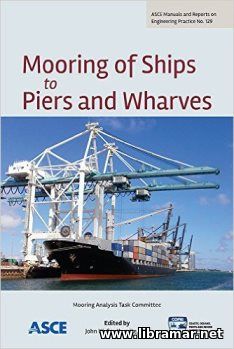 This manual is expected to provide the ship designer, shipbuilders and all personnel involved in ship operation with the technical knowledge and guidance required to properly determine the design practices for the safe mooring of their vessel at the wharves and fixed piers in sea ports and harbors.
The huge and technically complex vessels of today featuring significant wind exposure and deep drafts are posing serious mooring challenges to the masters, ship designers and pilots. the mooring incidents, should they occur, are commonly very costly - such incidents have already emphasized the demand for much better understanding of the fundamental mooring design principles.
It should be noted that none of the existing standards or construction codes specifically address the design of the mooring/berthing facilities. The present manual is aimed to give the required background in order to make sure that the designed mooring structures are technically sound and reliable, i.e. to assure that they will provide a safe berth for the ships.
The content of the Manual covers such important topics as the basic design requirements, various operational considerations, mooring principles, fender systems, hardware and fittings, equipment, maintenance issues, forces acting on the vessel and many other important aspects.
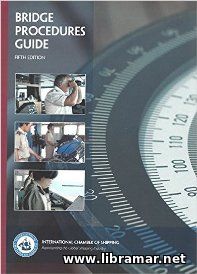 The latest release of the widely acknowledged and world popular marine industry Guide to the bridge procedures issued by ICS with the intention to provide such valuable guidance to the ship Masters, officers on watch, shipping companies and various training entities. The present publication is often referenced in the footnote of many IMO conventions.
This is the revised edition of the Guide, that continues the established tradition to cover all internationally recognized industry standards as well as the recommendations that have been adopted by the IMO; moreover, this edition also addresses the 2010 amendments to the IMO STCW. This convention introduces the enhanced BRM (standing for the Bridge Resource Management) training for all ship officers who are considered to be in charge of the navigational watch. In addition, this volume contains the very useful bridge and emergency checklists that would be very helpful to the crew members, including the checklists for ECDIS familiarization.
The authors of the publication have paid particular attention to the growing importance of the voyage planning process. We would definitely recommend that one copy of the Guide is carried on the navigation bridge of every marine ship and some copies are there in the technical departments of the shore offices. For sure, this document does not need any introduction...
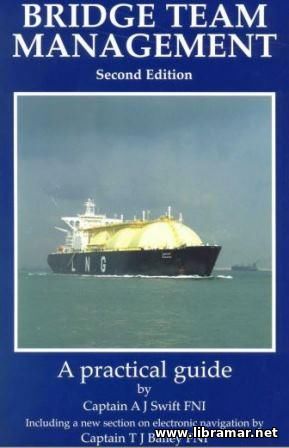 Have a look in this second edition of the practical guide released to shed some light on the major aspects of the bridge team management. Nowadays, most of the marine accidents take place due to the lack of operational system that would allow for detection and prevention of the human mistakes.
The content of the present volume has been designed specifically to make the sea voyages be performed in a safe way through provision of the detailed and clear explanations of how the various parts of the bridge team management shall be carried out. The material contained in the first edition of the volume has been significantly reworked and updated with the very latest IMO recommendations explained in a good seafaring language.
One of the key requirements for the safe manning and operation any vessel is having the high class and duly equipped crew. This is actually what every Captain and officer wishes; however, same is not always possible, considering the difficult economic times.
Sometimes the crew consists of the personalities possessing different sort of abilities, and working on the equipment that should be replaced long time ago. But, it is still possible to reach maximum results providing that every single team member plays his or her role, and this is what the present volume is about.
 You must definitely have a look in this piece of classics, if you are a true enthusiast of navigation. The publication was first released in 1900, and was in use for teaching the students of navigation throughout more than a century. Just imagine that! The arrangement of the material is not typical for the modern navigation textbooks but is quite traditional for the titles of elder generations.
It starts with the general information about mathematics – arithmetic and logarithms, since the author considered the knowledge of these essential and must-have one before you proceed any further. After that, some information is provided on the tools that are used in compass and nautical chart work, followed with the instructions on practical use of compass.
There are different types of sailing covered in the next chapter, including parallel and plane sailing, traverse and middle latitude sailing etc. after that, there is a separate chapter devoted to the charts, and this concludes the first part of the volume. The second part, in turn, covers such all aspects of the nautical astronomy which is obviously something that every mariner shall have a good understanding of even today, in the world and time of electronic navigation.
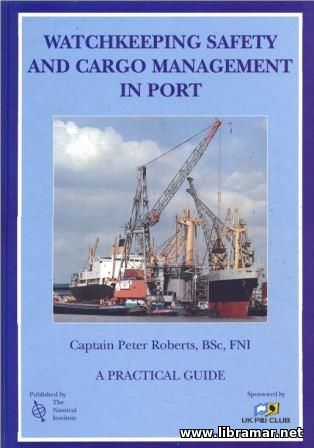 The content of the present guidebook was developed with intention of the author to give good fundamentals for working out the effective watchkeeping when the vessel is in port. Same is expected to be achieved through demonstration of the best operational practices. The title was released in response to a growing need for the practical instructions for the shipboard OOW, standing for the officer on watch.
The main idea is to provide junior officers with the assistance in proper identification of their duties, and letting them better understand the significance of the work they are assigned with. The readers who have spent some time with this book, going carefully through all chapters, will have a proper idea of the practices required for conducting safe watch, arrange for a correct watch handover, contribute into prevention of the damage and/or loss, provide necessary support to the Captain and Chief Mate, etc.
All of the listed activities are critically important for the safety and effective work of the vessel, since, when performed properly, they allow to save time, which, in all cases, is extremely valuable, and that is why the instructions provided in the pages of this guidebook, shall be followed.
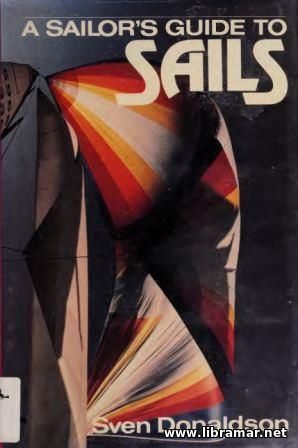 The main objective, as declared by the author of this brilliant title, was to assist the recreational sailors willing to improve their technical knowledge and understanding of the sails, so that they can later acquire the proper sails and work with them in the most intelligent manner. The material is presented in a readable way allowing the volume to be treated as a good and easy-to-read introduction.
It should not be looked at as the reference tool for the experts in sailing. Most of the casual yachters and boaters have very limited knowledge of the use of sails and their working principles. Many of them think that the design of the sails is something too difficult to be understood, but they are mistaken. What they shall do is to go through the pages of this book, and they will see that there is nothing that could not be understood.
The information contained here will be of great practical benefit to the readers and will definitely contribute in the safety of their future sailing activities, and this is the very top aim of the author. Make sure you have gone through the book before you start dealing with the sails for the first time, and you will not get disappointed with the results of your training.
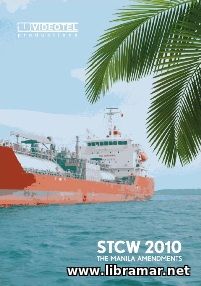 This is a booklet accompanying the training video released by Videotel and devoted to Manila Amendments to the STCW Convention. While it is quite compact, the publication covers all important issues. This training package has been specifically designed to be used individually, for self study, but it can also be used in small groups of trainees with the target audience including ship owners and managers, port state officers and other governmental authorities, and providers of maritime training courses.
The trainees will gain a sound understanding of the purpose of Manila amendments to STCW convention and their scope, and will be able to plan the changes required to be done to ensure compliance with the standards and requirements taking into account all recent amendments to their contents. We would also recommend to use this Quick Guide for Seafarers as a supplementary training material.
All key issues have been duly covered and upon completion of the course the trainees will be fully aware of the convention and amendments, certification requirements and safety culture, ship security and maritime piracy, action plans and port state work, tanker training and fitness for duty - this is a list of topics covered in the pages of the booklet. In addition to the training audience specified above we would recommend this package to everyone in shipping industry from the crew members and shore support personnel to the managers.
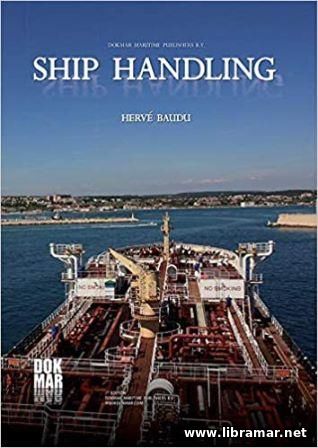 This is one of the best titles available today on ship handling. There are three major parts in this volume. In the first part, the essential features of the vessel are described together with the main maneuvering methods in use. The second part is devoted to the forces influencing the vessel movement and requiring close attention.
Finally, the last part addresses the factors affecting the vessels in the course of the maneuvering, for example when moving inside drydocks, performing mooring operations, etc. the author is mainly focusing on the different factors that affect the vessel’s maneuvering characteristics.
Since all of the topics are looked on at a quite essential level, the volume will be practically useful and can be utilized for the training. Sailing in the narrow waterways has also been covered, including the STCW recommendations setting up the helmsmen abilities.
The content of the volume reflects more than fifteen-year boat sailing experience of the author, and is intended for use by the students of the different marine education facilities; however, it will be equally useful for the self-studying. Make sure you have your own free copy and start familiarizing yourselves with the magic world of sailing.
|







